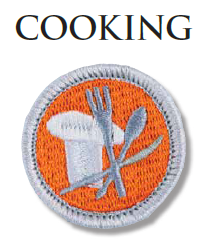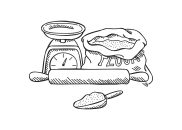Cooking Merit Badge Health & Safety
[text-box width=”100%” align=”center”]

[unordered title=”Areas of Study:”] [line]Health and Safety[/line] [line]Nutrition[/line] [line]Cooking Basics[/line] [line]Cooking at Home[/line] [line]Camp Cooking[/line] [line]Trail and Backpacking meals[/line] [line]Food related careers[/line] [/unordered] [/text-box] [div-line] [text-box] The most serious part of our study on Health and Safety is understanding the major forms of food borne illnesses.
Other bacterium, parasites, worms and virals
Other lesser known and more technical terms for these bacterium, parasites, worms & virals:
Best Practices for Prevention of Food Borne Illnesses
[ordered] [line]Wash your hands, cutting boards & utensils often (before & after use). Keep everything clean;[/line] [line]Wash your fruits and vegetables, get all dirt out using proper food handling techniques;[/line] [line]Do not use the ingredients if the packaging is damaged, or came from an untrusted source;[/line] [line]Be sure food is kept at proper cooling temperatures;[/line] [line]Cook meats, poultry, pork, fish and shellfish to the proper minimum cooking temperatures; [/line] [line]Try never to drink unpasteurized dairy products;[/line] [line]Use your senses, if something doesn’t look right, ask; and[/line] [line]When in doubt, throw it out.[/line] [/ordered]Remember the above information when you are working around food whether it is at home, at a camp site or on the trail.
[/text-box] [div-line]




